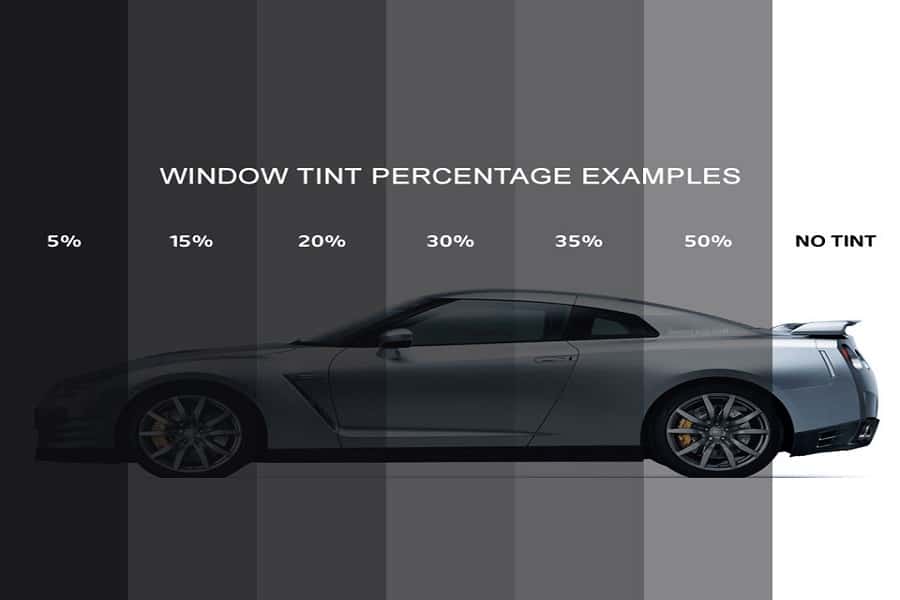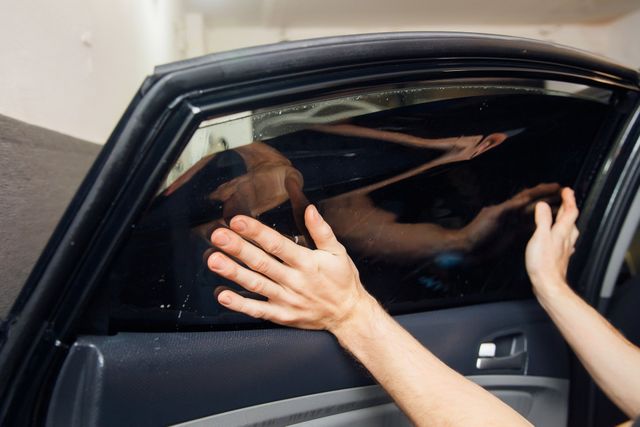Window Tinting Options: Discover the Right Shade for Your Style and Demands
Choosing the proper window tint for your vehicle entails a mindful consideration of different factors, including individual aesthetics, useful requirements, and lawful limitations. With alternatives ranging from light tintss that offer marginal privacy to darker tones that boost seclusion, the choices can be overwhelming.
Understanding Window Tinting Degrees
When considering window tinting, it is vital to comprehend the various levels of tint offered, as they substantially influence both looks and functionality. Window tinting is classified based on Visible Light Transmission (VLT) percentages, which suggest the amount of light permitted to travel through the glass. The VLT percentage can range from very light (over 70%) to extremely dark (listed below 5%)
The main levels of tint consist of clear, which uses UV security without altering exposure; light tint (over 50% VLT), which somewhat decreases glare while preserving exposure; tool tint (around 35% VLT), striking an equilibrium in between privacy and light transmission; and dark tint (below 20% VLT), offering substantial privacy and warm reduction however limiting outward visibility.
Recognizing these degrees is vital as they can influence driving safety and security, legal conformity, and personal convenience. Furthermore, local regulations frequently determine allowable tint levels, differing by state or municipality. Prior to picking a tint, it is recommended to research study and guarantee adherence to these laws while thinking about individual choices for style and useful advantages.
Popular Tint Shades Explained

One of the most preferred options is the traditional dark tint, commonly varying from 20% to 5% VLT (Visible Light Transmission) This shade uses optimum privacy and a streamlined, innovative look. It effectively obstructs UV rays and warm, making it ideal for warm climates, though it might restrict exposure in the evening.
Conversely, lighter tones such as 35% or 50% VLT offer an extra refined appearance while still offering some degree of personal privacy. These shades are perfect for those seeking a balance in between aesthetics and capability, as they permit for better visibility and follow different lawful requirements.
An additional arising choice is the ceramic tint, which can can be found in a range of shades - window tinting. It provides exceptional warm being rejected and UV security without substantially modifying the lorry's look

Legal Regulations for Window Tinting
Comprehending the legal guidelines surrounding window tinting is crucial for automobile proprietors seeking to tailor their autos. Each state in the united state has certain laws regulating the darkness or agility of window tintss, typically measured by Visible Light Transmission (VLT) percentage. VLT refers to the quantity of light that can travel through the glass and the film combined.
In lots of states, guidelines determine various VLT percents for numerous windowss, including front windscreens, side windowss, and rear windowss. For example, some states may allow a color of 70% VLT for windscreens while allowing darker tintss for rear windowss. Additionally, certain states have limitations on reflective tintss, which can create glare for other chauffeurs.
Failure to abide by these regulations can cause fines, mandated removal of the tint, and increased insurance policy premiums. Car proprietors should speak with local legislations or state DMV web sites to ensure they are within legal limitations before waging setup. Understanding these laws not just assists prevent legal consequences however additionally makes certain a safe driving experience.
Advantages of Different Tint Materials
Checking out the advantages of various tint materials exposes substantial advantages that can enhance both the performance and aesthetic charm of an automobile. Each product supplies distinct attributes matched to specific needs and choices.
Dyeded window films are preferred for their price and capability to decrease glare. They effectively obstruct UV rays, protecting the interior from fading, though they may not give the greatest heat being rejected. Metalized films, on the various other hand, deal remarkable heat reduction and UV defense as a result of their reflective buildings. They can enhance personal privacy and protection yet might disrupt electronic signals.
Ceramic window films stand for Full Article a costs option, offering remarkable heat denial while maintaining visibility. They are non-metallic, thus preventing any signal disruption, and are very durable, resisting scrapes and fading with time. Additionally, ceramic films do not consist of dyes, making certain a longer-lasting look.
Lastly, hybrid films combine elements from dyeded and metalized alternatives, using a balanced efficiency in terms of warm rejection, glare reduction, and expense. Each tint product offers special purposes, permitting automobile owners to select the most effective fit for their way of life and aesthetic preferences, inevitably improving their driving experience.
Choosing the Right Tint for You
Finding the right window tint includes taking into consideration different variables, including personal choices, vehicle kind, and local regulations. Examine Learn More your individual design and preferred degree of privacy, as these will lead your option of tint shade. Darker tintss offer boosted privacy yet might not be appropriate for all motorists, specifically those that favor an even more open feel inside their automobile.
Next, consider your car type, as the shapes and size of windowss can influence the performance of specific tintss. Bigger windowss might benefit from reflective tintss that lower glow while smaller windowss may be extra matched to dyeded films that provide refined visual appeals.
Additionally, it's essential to examine neighborhood guidelines pertaining to window tinting. Several states enforce restrictions on the permitted darkness and reflectivity, particularly for front windowss. Conformity with these regulations is vital to prevent fines and guarantee safety.
Last but not least, assess the tint product that best matches your needs. Options include dyeded, metalized, ceramic, and hybrid films, each offering one-of-a-kind advantages associating to warm rejection, UV defense, and durability. By taking into consideration these elements, you can confidently select a home window tint that lines up with your design and practical needs.
Conclusion
To conclude, choosing the appropriate window tint needs cautious factor to consider of numerous variables, consisting of VLT portions, regional guidelines, and the desired aesthetic. Different tint materials use distinct advantages that can enhance automobile comfort and defense. By extensively understanding the readily available options and straightening them with private preferences and practical needs, one can accomplish an optimum equilibrium see this site in between style and performance in window tinting options.
Choosing the appropriate window tint for your vehicle entails a careful consideration of various variables, including individual appearances, functional demands, and legal restrictions. Each state in the U.S. has certain laws regulating the darkness or lightness of window tintss, commonly gauged by Visible Light Transmission (VLT) percentage. Some states may allow a color of 70% VLT for windscreens while allowing darker tintss for rear windowss.Locating the right window tint involves considering different elements, consisting of individual preferences, lorry type, and neighborhood policies.In verdict, picking the appropriate window tint needs careful consideration of numerous factors, consisting of VLT portions, local regulations, and the preferred visual.